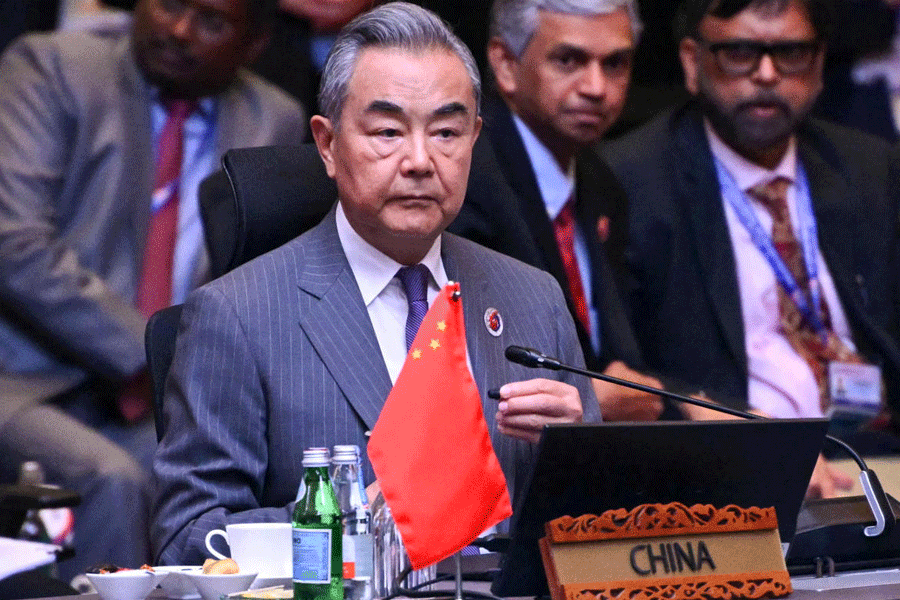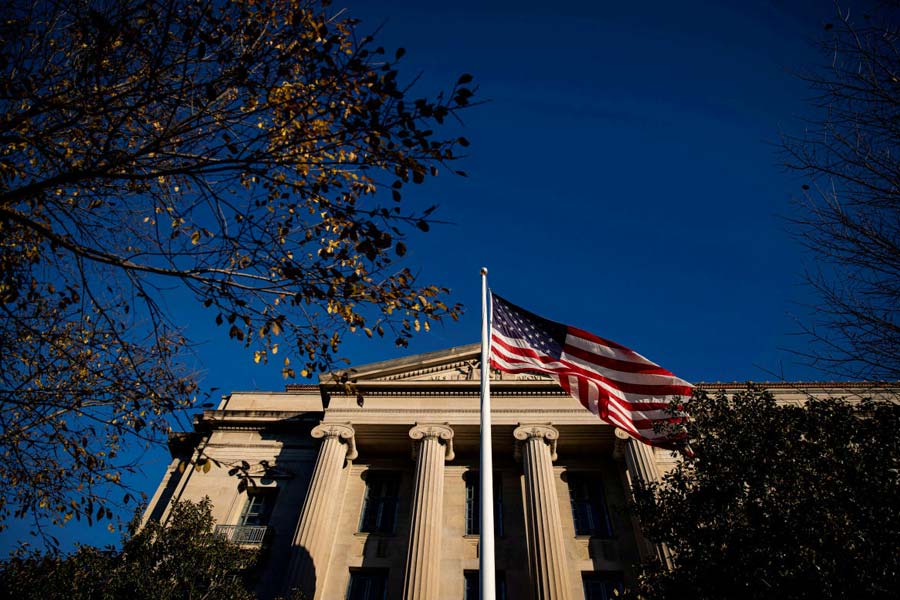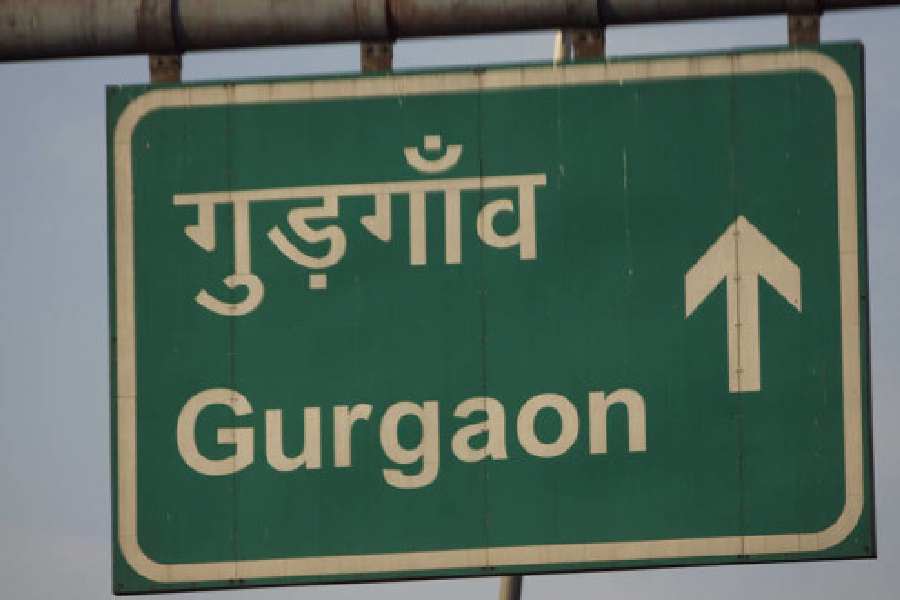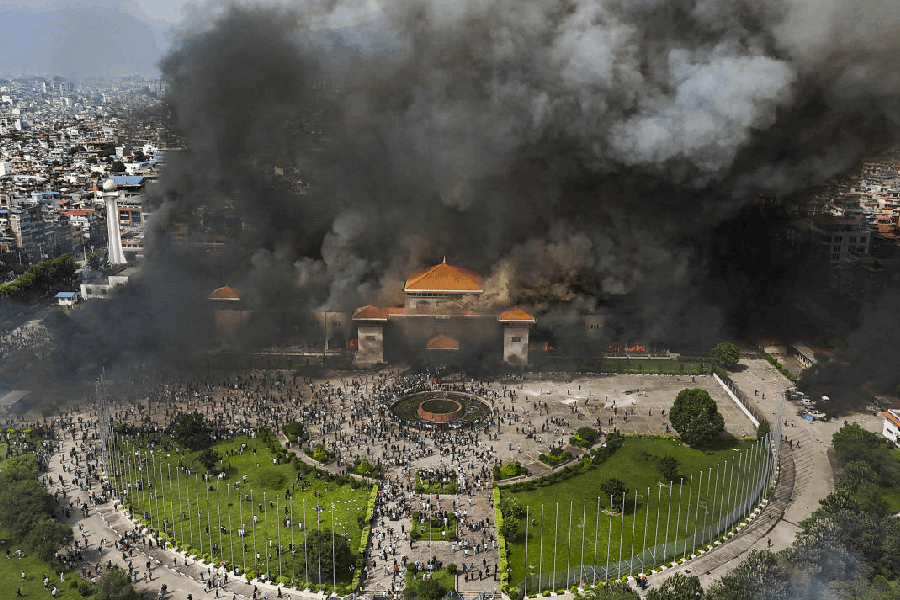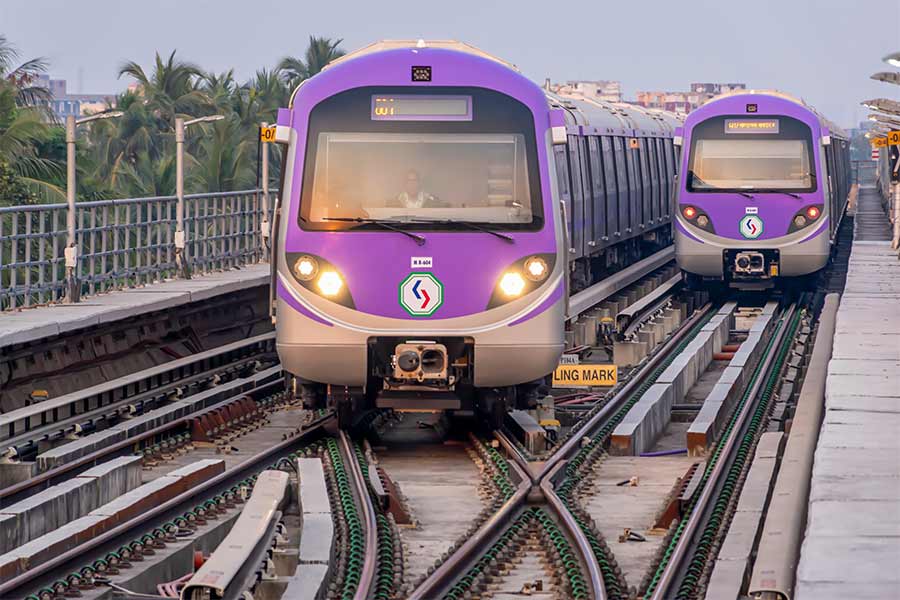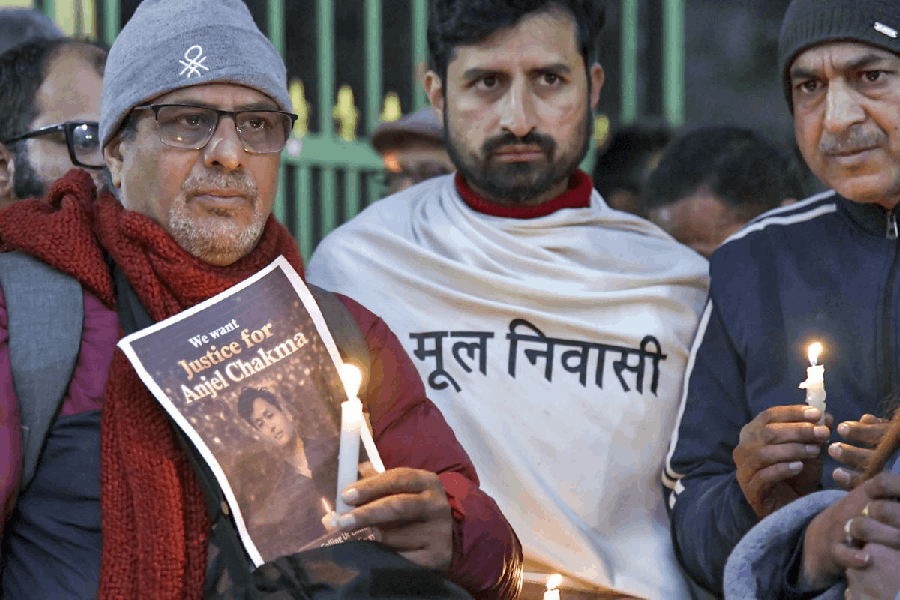 |
The ostentation of opulence. The oppression of opulence. The orgasm of opulence. Sanjay Leela Bhansali’s unapologetic, unbridled, unadulterated opulence.
But under that opulence there is some fine and fervent storytelling this time. After a long time. The Bhansali of yore. The Bhansali of Hum Dil De Chuke Sanam. Self-indulgent but deliciously so. Overcooked but very edible.
SLB always needs a source material to start infusing his vision to it. From Maitreyee Devi’s Na Hanyate (Hum Dil...) to The Miracle Worker (Black) to Dostoyevsky’s White Nights (Saawariya) he has often picked a foreign source (and not always credited them) as his canvas. Like with Sarat Chandra Chattopadhyay’s Devdas, this time it’s a more straightforward adaptation — of William Shakespeare’s Romeo and Juliet.
The setting is the town of Raanjhad in Gujarat with the Montagues and the Capulets being replaced by the Rajadis and the Saneras. It’s a 500-year-old war where only guns do the talking and blood is the only medium of settlement. Even kids are chased around with rifles and shot at. “Maut ka dhanda karte karte jindagi ki keemat bhool gaye hain.”
Two people, though, wish to spout water from the Kutch. But actually more than uniting their families, Ram and Leela want to get into each other’s pants, er ghagras. Forget their hands, they can’t keep their lips off each other. Their cheeks smear colour on each other in Holi, they discuss their lack of chest hair and make fun of each other’s sizes. There’s nothing unsaid: “Jo tereko chahiye... jo mereko chahiye...”
 |
The romance in this latest retelling of the world’s most-told love story is almost entirely sexual. The first time the two meet, they point guns at each other. While hers is a real gun, his is a toy one, which spurts water as they look at each other with hungry eyes. They seek sexual intimacy every time they meet, even when there’s a death in the family, even when they stare at death themselves. “Main toh teri joganiya, tu jog laga de re....”
Bhansali’s erotica is so in-your-face and played out with so much panache by his leads that things stay sensual and never get raunchy and repulsive. That Ram and Leela’s love is born out of lust doesn’t hinder the core of the Bard’s two-against-the-world text. “Keh do saari duniya se, Ram ki sirf Leela hai.”
It’s only after they are together that the writers introduce new twist-in-the-tale sub-plots in the second half which manage to throw the romance out of the balcony. Dead peacock (Incredible India tribute to Godfather’s horse?), a redundant item song (your Guess is right: exotic PeeCee) and chopped finger (Big Lebowski?) clutter the last hour. “Dushman se pyaar nibhana har kisi ki bas ki baat nahin hai.”
That fatigue which sets in makes the film feel overlong but the finish is strong — there could have been only one culmination — and lends the love story the epicness it aspires for. “Soya tha nas nas mein... Ab ye jag gaya... Aye lahu munh lag gaya!”
True to the tradition of an auteur (officially credited as director, music director, co-writer, co-editor), Bhansali brings his own world to his films. Here, the colour palette is reminiscent of Hum Dil..., the format of breaking into songs for anything and everything is from Saawariya and you can hear strains of the Devdas theme in certain scenes. But the elements all beautifully come together to celebrate the romance of Ram and Leela.
Ranveer Singh as Ram and Deepika Padukone as Leela bring Bhansali’s dream alive. While he is the showy sort, she is as natural as ever. And between them they indulge in some zesty kissing!
From the time he appears in that dandruff-dusting Tattad tattad, there is a rowdy streak in the way Ranveer plays Ram. Bhansali’s obviously in love with that carefully sculpted body and doesn’t need a plot point to take his shirt off. It’s when the Devdas toxins hit his system that the young star gets his timing and delivery a little wobbly.
Deepika’s Leela is woven in the same SLB stitch as Aishwarya’s Nandini in Hum Dil.... As Ranveer says somewhere in the film, she is indeed “special edition”. After Yeh Jawaani Hai Deewani and Chennai Express, this is Deepika’s hat-trick of brilliance this year and it won’t be too early to hail her as one of the great heroines of the Indian silver screen.
Besides the leads, Bhansali gets together a stellar supporting cast, led by the vintage Supriya Pathak as the deliciously loud Mother Don. The likes of Richa Chadda, Gulshan Devaiah, Abhimanyu Singh, Sharad Kelkar and Jameel Khan ensure that it’s a superbly acted piece.
Barfi!’s cinematographer Ravi Varman lights the frames in true-blue (no colours spared this time) Bhansali gorgeousness. The production design by Wasiq Khan, although often similar to SLB’s earlier films, is grand. The music is a lovely mix of thumping beats, noisy notes and dulcet melodies.
His vision has made cinematic history. His vision has been booed. His vision has set sail to careers. His vision has shut down studios. But as a true artiste, the man’s stuck to his vision and has now put out something so pure and passionate. Let’s raise a toast, strike that, let’s raise our guns to the often flawed but unflinching vision of Sanjay Leela Bhansali. Dhishqyaun!
P.S.: The title is never mentioned in the review so as not to hurt anybody’s sentiments!


